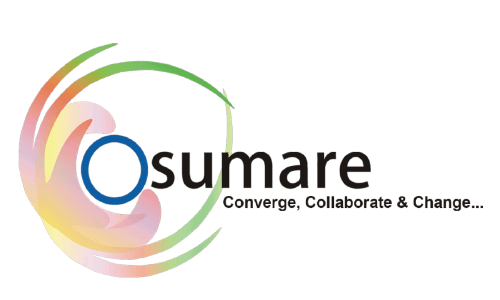As the digital world becomes more competitive in 2025–2026, the importance of generating consistent organic traffic to your website is greater than ever. With search engines evolving through AI integration, semantic search, and user-focused updates, businesses must adapt by refining their SEO strategies and embracing smarter, data-driven marketing techniques.
Whether you’re a growing startup or a well-established enterprise, organic traffic remains the most cost-effective way to build brand visibility, authority, and long-term customer relationships. Here’s your complete guide to winning the SEO game in 2025–2026.
1. Understand Your Audience & Set Clear SEO Objectives
Success begins with knowing exactly who you’re targeting and what they’re searching for.
Start with:
Creating in-depth buyer personas
Using GA4, Hotjar, or Clarity to analyze user behavior
Defining both short-term traffic milestones and long-term brand goals
Aligning your content to user journey stages (awareness, interest, decision)
Why it matters: When you know your audience’s pain points and intent, you can create content that truly resonates—and ranks.
2. Keyword Research Based on Intent & AI Trends
In 2025–2026, Google places a stronger emphasis on user intent, context, and semantic meaning. This means your keyword strategy must evolve accordingly.
Key Approaches:
Focus on intent-based keywords (informational, navigational, commercial, transactional)
Use long-tail keywords and voice search phrases (e.g., “how to reduce bounce rate on eCommerce sites”)
Integrate LSI keywords to build topical depth
Leverage tools like:
SEMrush
Ahrefs
AnswerThePublic
Surfer SEO
Google’s People Also Ask (PAA)
Pro tip: Build content around topic clusters and link them to pillar pages to strengthen your site’s topical authority.
3. Create Helpful, Search-Optimized Content
Google’s 2025 updates continue to prioritize Experience, Expertise, Authoritativeness, and Trustworthiness (E-E-A-T). Your content must go beyond SEO tricks—it needs to help, educate, and solve.
Best Practices:
Write for humans first, optimize for search engines second
Use clear headings, bullet points, and answer-focused content
Create blog posts, guides, videos, and infographics to match diverse content preferences
Target featured snippets, FAQ boxes, and People Also Ask sections with structured answers
Update existing content regularly to reflect current data, trends, and algorithm expectations.
4. Improve Technical SEO for Performance & Indexing
Technical SEO remains a vital foundation for increasing organic traffic. A fast, functional, and indexable site is critical in 2025–2026.
Audit & Optimize:
Page speed & Core Web Vitals
Mobile responsiveness
Structured data/schema markup
Broken links, redirect loops, crawl errors
Indexing status in Google Search Console
Secure HTTPS protocols
Use tools like Screaming Frog, Ahrefs Site Audit, and Google Lighthouse to run in-depth audits.
5. Combine On-Page & Off-Page SEO
You can’t succeed with just one. On-page SEO enhances content discoverability, while off-page SEO builds authority and trust.
On-Page SEO Includes:
Keyword-rich meta titles and descriptions
Clean URL structure
Internal linking with anchor text
High-quality alt text for images
Clear content hierarchy (H1, H2, H3)
Off-Page SEO Includes:
Building backlinks from high-authority websites
Guest blogging and influencer collaborations
Social proof via brand mentions and PR
Social media marketing to amplify content reach
Local SEO citations for location-based businesses
Pro tip: Diversify your backlink profile to include educational (.edu), governmental (.gov), and news domains.
6. Embrace Mobile-First & User Experience (UX) Design
With 75%+ of searches happening on mobile devices in 2025, having a mobile-optimized and UX-friendly website is non-negotiable.
Essentials:
Responsive web design that adapts to all screen sizes
Fast-loading pages (under 2.5 seconds)
Easy-to-read text and clear CTAs
Mobile-friendly menus and intuitive navigation
Avoid intrusive interstitials/popups
Consider Progressive Web Apps (PWAs) for delivering app-like experiences directly via browsers.
7. Track, Analyze & Adapt with Real-Time SEO Metrics
What gets measured gets improved. Data insights help you refine your approach continuously.
Track:
Organic traffic trends
Conversion rate from organic visits
Click-through rate (CTR) on SERPs
Bounce rate and average session duration
Keyword rankings (especially featured snippets & top 10)
Tools:
Google Analytics 4 (GA4)
Google Search Console
Microsoft Clarity / Hotjar
Ahrefs / SEMrush Dashboards
Set up event-based goals in GA4 to measure specific user actions like form fills, clicks, or purchases.
8. Work with a Trusted SEO Agency for Scalable Growth
SEO in 2025–2026 demands consistent effort, evolving knowledge, and cross-functional expertise—from content to coding to conversion tracking.
Why partner with Digital Markitors?
Over a decade of experience in SEO and digital growth strategies
Industry-specific SEO plans tailored for each client
Transparent reporting and measurable results
Cost-effective, long-term strategies that generate ROI
Final Words: Organic Traffic Growth is a Journey, Not a Shortcut
In 2025–2026, increasing organic traffic requires more than just ranking for keywords. It’s about understanding your users, delivering value, and providing seamless experiences—across every stage of the funnel.
By implementing the strategies above and consistently refining them, your website can attract qualified traffic, earn higher rankings, and achieve lasting digital success.

